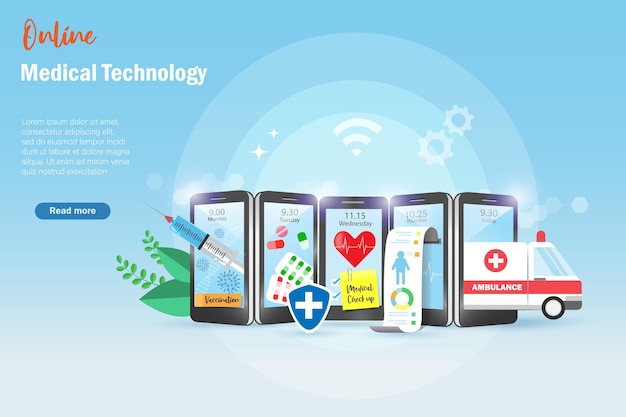Just How Subscription-Based Medical Care Is Revolutionizing the Clinical Industry

The Surge of Subscription Healthcare
In current years, the medical care industry has actually witnessed a substantial shift towards subscription-based models, showing broader customer trends preferring benefit and predictability. This improvement is driven by the increasing demand for more easily accessible and tailored care solutions. Subscription health care, sometimes referred to as concierge medicine or straight primary care, provides clients a set month-to-month fee for a variety of medical services, significantly altering conventional fee-for-service designs.
The rise of membership healthcare is promoted by advancements in technology, which allow streamlined communication between clients and providers - subscription based healthcare. Digital systems and telehealth solutions have actually ended up being integral, using individuals the ability to set up appointments, accessibility medical documents, and receive assessments online. This technological combination not only boosts individual engagement yet also permits service providers to supply extra reliable care
Additionally, the subscription design aligns with the advancing expectations of patients that seek more control over their healthcare expenditures and experiences. By eliminating the unpredictability of co-pays and insurance coverage claims, subscription-based healthcare uses a transparent and straightforward method. While this version is getting grip, its expansion encounters challenges such as regulative difficulties and the need for more comprehensive approval within the standard healthcare environment. Its growing visibility marks an essential minute in the evolution of healthcare distribution.
Benefits for Clients and Suppliers
Subscription-based healthcare provides a wide range of advantages for both patients and providers, improving the characteristics of medical treatment. For people, this design offers boosted accessibility to health care services. With a foreseeable regular monthly charge, patients can enjoy endless appointments, lowered wait times, and personalized treatment. This plan usually leads to a more aggressive strategy to health administration, enabling prompt interventions that can avoid persistent conditions from escalating. Furthermore, the economic openness of subscription versions lowers the changability associated with conventional fee-for-service billing, alleviating the burden of unanticipated clinical expenses.
For medical care companies, subscription-based versions promote a more gratifying and lasting method. Administrative tasks are often structured, decreasing overhead prices and allowing carriers to devote more time to person communication. In general, subscription-based medical care lines up the rewards of people and carriers, promoting a more effective and patient-centered medical care delivery system.
Secret Features of the Version
Frequently, the crucial attributes of the subscription-based healthcare version emphasize its distinct technique to providing clinical services. Central to this version is the concept of predictable, monthly payments, offering people a comprehensive series of services without the unpredictability of typical fee-for-service frameworks. This design often includes limitless accessibility to main care solutions, preventive treatment, and routine exams, ensuring that individuals can involve with their doctor proactively instead of reactively.
Additionally, direct interaction networks, such as telemedicine and messaging systems, are stressed, allowing individuals to get timely suggestions and assessments without requiring in-person consultations. This improves ease of access and benefit, particularly for people with mobility restraints or those residing in remote areas. The design also fosters more powerful doctor-patient connections, as doctor are incentivized to concentrate on lasting wellness end results as opposed to temporary brows through.
Moreover, subscription-based medical care often incorporates technological technologies, such as digital health and wellness documents and health monitoring apps, to give individualized and reliable treatment. Clients benefit from collaborated and continuous care management, which is customized to their specific health needs. Ultimately, these functions collectively develop a patient-centered healthcare experience, focusing on ease of access, expense openness, and preventive treatment.

Factors To Consider and difficulties
While the subscription-based health care model offers many advantages, it is not without its difficulties and factors to consider. One substantial obstacle is making sure equitable accessibility. Membership versions might inadvertently prefer those with higher socioeconomic standing, potentially expanding variations in medical care access for lower-income people that might fight with monthly fees. This increases ethical issues regarding inclusivity and equity in health care distribution.
An additional difficulty hinges on regulative conformity. Subscription-based healthcare should browse an intricate web of laws that differ by region, including concerns around individual privacy, information security, and state licensing needs. Making sure compliance without hindering the design's adaptability and development can be discouraging for service providers.
Additionally, there is the risk of overutilization or underutilization of services. People paying a dealt with fee may overuse solutions, causing raised operational expenses, while others may underutilize as a result of be afraid of burdening the system, possibly overlooking necessary treatment.
Future Leads and Innovations
The landscape of subscription-based medical care is positioned for improvement through arising technologies and evolving potential customers. As innovation go to this site continues to development, the assimilation of expert system and artificial intelligence presents significant opportunities to boost diagnostic precision and improve person monitoring. Predictive analytics can change preventive care by identifying prospective wellness threats before they materialize, thus decreasing both expenses and the worry on healthcare systems.
In try these out addition, telemedicine is set to broaden within membership models, offering people increased accessibility to healthcare professionals despite geographical constraints. This not just promotes connection of care but also encourages clients to involve even more proactively in their health and wellness administration. Furthermore, blockchain innovation supplies possible in safeguarding patient data and making sure interoperability throughout systems, fostering count on and transparency.
Partnerships between technology business and medical care companies are most likely to produce innovative remedies, improving person experiences and outcomes. As these leads appear, subscription-based medical care has the potential to redefine just how care is supplied and accessed.
Verdict
Subscription-based healthcare is changing the clinical market by offering a much more accessible, predictable, and patient-centered approach to clinical services. This version enhances patient-provider partnerships, makes certain financial openness, and highlights preventative treatment via endless appointments and telemedicine. Despite challenges such as governing difficulties and possible differences in gain access to, the registration design holds promise for an extra customized and effective healthcare experience. As innovation developments, additionally advancements are most likely to attend to existing challenges and optimize health care shipment.
Registration medical care, sometimes referred to as concierge medication or direct primary care, uses clients a fixed monthly charge for an array of medical solutions, significantly altering conventional fee-for-service models.
In addition, the subscription version aligns with the progressing expectations of people who look for even more control over their medical care expenditures and experiences. For patients, this design offers improved accessibility to health care services. Generally, subscription-based health care straightens the incentives of companies and people, promoting a much more patient-centered and reliable medical care delivery system.
Furthermore, telemedicine is set to expand within membership models, offering people boosted access to medical care specialists find more no matter of geographical constraints. - subscription based healthcare